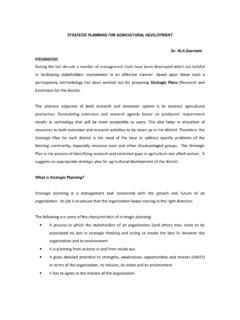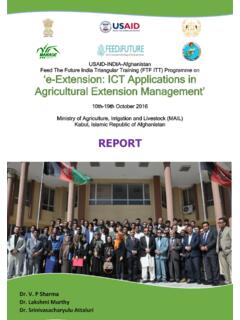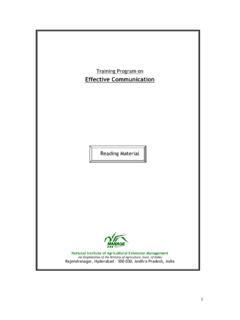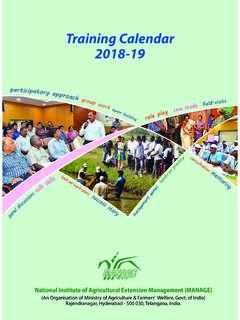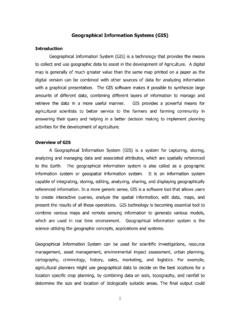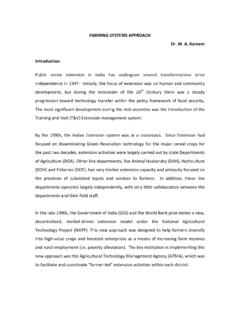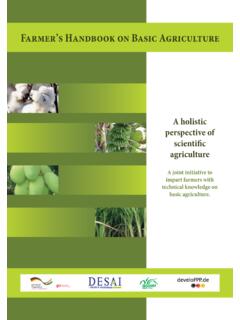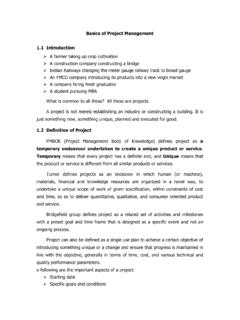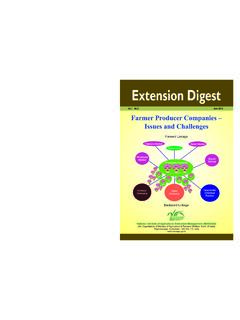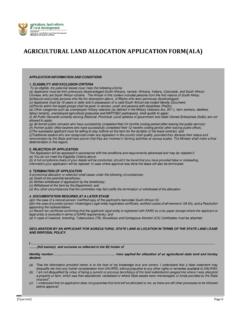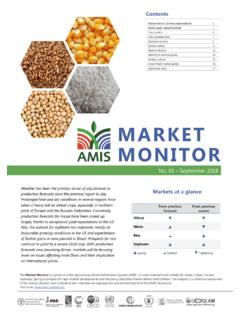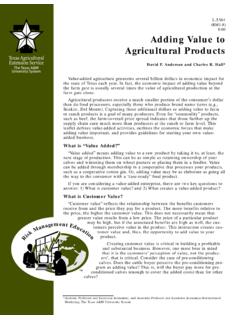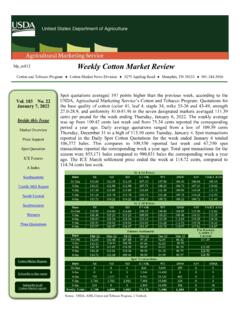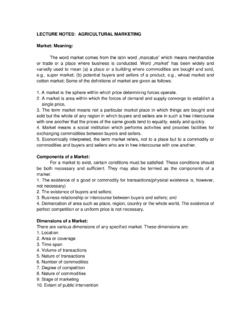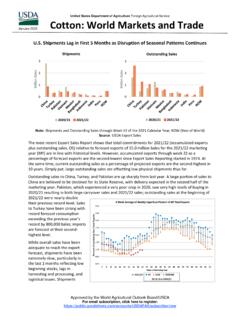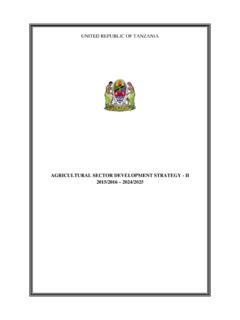Transcription of STRATEGIC PLANNING FOR AGRICULTURAL …
1 STRATEGIC PLANNING FOR AGRICULTURAL DEVELOPMENT Dr. Introduction During the last decade a number of management tools have been developed which are helpful in facilitating stakeholders involvement in an effective manner. Based upon these tools a participatory methodology has been worked out for preparing STRATEGIC Plans (Research and Extension) for the district. The ultimate objective of both research and extension system is to increase AGRICULTURAL production. Formulating extension and research agenda based on producers requirement results in technology that will be more acceptable to users.
2 This also helps in allocation of resources to both extension and research activities to be taken up in the district. Therefore, the STRATEGIC Plan for each district is the need of the hour to address specific problems of the farming community, especially resource poor and other disadvantaged groups. The STRATEGIC Plan is the process of identifying research and extension gaps in agriculture and allied sectors. It suggests an appropriate STRATEGIC plan for AGRICULTURAL development of the district. What is STRATEGIC PLANNING ? STRATEGIC PLANNING is a management task concerned with the growth and future of an organization.
3 Its job is to ensure that the organization keeps moving in the right direction. The following are some of the characteristics of STRATEGIC PLANNING : A process in which the stakeholders of an organization (and others they invite to be associated to) join in STRATEGIC thinking and acting to create the best fit between the organization and its environment It is PLANNING from outside in and from inside out. It gives detailed attention to strengths, weaknesses, opportunities and threats (SWOT) in terms of the organization, its mission, its vision and its environment It has to agree to the mission of the organization It should be in harmony with the organization s vision that is carefully developed and shared by the stakeholders Hopefully, it yields a STRATEGIC and implementable plan that constitutes the best fit between the external environment and internal capabilities.
4 In brief STRATEGIC PLANNING is What is intended to be achieved in future? How to get there? It involves fundamental choices about Organization s mission or goal to pursue, Program and services to offer to accomplish the goals How to mobilize and utilize the needed resources, people, money, expertise and facilities etc. Why STRATEGIC PLANNING STRATEGIC PLANNING Serves as a road map for the organization Lends a framework for systematic handling of operational decisions Lays down growth objectives of the organization and also provides strategies needed for achieving them Ensures the organization remains a prepared organization Ensures that the organization takes care of needs of the stakeholders Ensures best utilization of the organizations resources Serves as a coping mechanism against uncertainty arising from environmental change Helps the organization to understand trends in advance and
5 Provides the benefit of a lead-time for taking crucial decisions and actions. Helps avoid haphazard response to environment Provides the best possible fit between the organization and the external environment. Helps build competitive advantages and core competencies Draws from both intuition and logic Prepares the organization to not only face the future but also even shape the future in its favour. Scope of STRATEGIC PLANNING To be strategically alert To be future oriented To be able to take risks in tapping opportunities To be insulated against environmental threats To develop the competence for assimilating changes faster To respond effectively and more economically To bring convergence To be able to generate large resources To gain expertise in technology, extension and market support systems Concerns of STRATEGIC PLANNING Future long-term dynamics is its concern.
6 Not day-today task Growth - direction, extent, pace and timing of growth Environment - the fit between the organization and its environment Strategy strategy is its concern; not the operational activities Integration integration is its concern; not a particular function Creating core competencies I competitive advantages creating long-term, sustainable, organizational capacity is its concern Need for STRATEGIC PLANNING in AGRICULTURAL development The present mechanism of PLANNING and implementation of agriculture and allied development programs are centralized in nature. This top down approach focuses on individual commodities / enterprises rather than on a holistic / integrated approach.
7 It is ad-hoc in nature and does not involve all actors. The farmers are considered as receivers of benefits rather than as responsible partners who can influence the production process. To address the aforementioned issues of each district it is required to develop a STRATEGIC Research and Extension Plan (SREP) by involving all stakeholders. The development and use of SREP would help in the following aspects: Get an overview of the prevailing scenario in the district Explore and understand the problems and opportunities in different farming systems, preference and priorities of the farming community Facilitate long-term visioning and STRATEGIC PLANNING for AGRICULTURAL development in the district in a concerted manner Facilitate involvement of all actors at different levels in the development process and, in the long run.
8 Share the load on the public extension system Facilitate integration of and redesigning the on-going developmental programs for the benefit of the farmers Development of annual action plans for each block in respect of the prevailing Agro-Ecological Situation Develop farmer centered, market oriented, extension-research management system The Contents of STRATEGIC Plan (SP): The extension and research interventions would differ across the Agro-Ecological Zone (AEZ) as per prevailing Agro-Ecological Situations (AESs) between crops, livestock, and farming systems as affected by roads, markets, input supply outlets, service facilities, and between farm households as a reflection of their resource endowment and socio-economic status.
9 Therefore, in formulating a STRATEGIC Plan, the following guiding principles should be kept in view. The STRATEGIC Plan will have two sections; and each section will have two subsections as under: Identify and build on Important farming system innovations or success stories that may intensify or diversify existing farming systems and, thereby, increase farm household income Increase farmers access to markets, technologies and, resources through farmers groups and organizations On-farm collaborative technology development, testing and refinement to address serious technological gaps in the existing farming systems Promote appropriate natural resource management (NRM)
10 Plan for building and maintaining the sustainable production systems within each AES. Diagnostic Section: Information sub-section (For the District) General features: Geographical area, number of sub-divisions, blocks, gram panchayat, villages etc in the district It may be supported with a map showing the boundaries of blocks with major cities, towns, roads, railway lines etc. River streams maps, floods, droughts, Natural calamities, Frequency & periodicity of occurrence (Source- Dist. Statistical Hand Book, Bureau of Econ. & Statistics) Agro-climatic information: Rainfall (quantity and distribution pattern), temperature and relative humidity etc.
